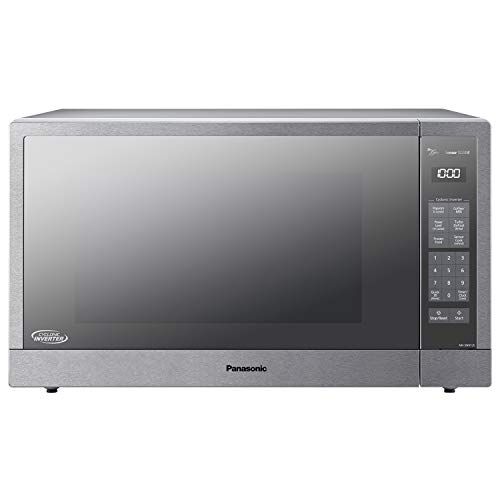Panasonic Microwave Oven
Introduction

In the world of kitchen appliances, the microwave oven is a staple for convenience and swift cooking. Panasonic, a renowned brand in consumer electronics, offers a range of microwave ovens that promise to enhance the cooking experience with innovative features and reliable performance. This review delves into one of Panasonic's popular models, exploring its functionalities, design, and overall value to help potential buyers make an informed choice.
Key Considerations Before Purchase

Choosing a microwave oven that suits one’s needs involves several factors that range from basic functionality to advanced features. Firstly, the size and capacity of the microwave are crucial. Panasonic offers various sizes, accommodating individuals living alone to large families needing more cooking space. The user should assess their kitchen space and cooking requirements before deciding on the size.
Another significant factor is the power output, which determines how quickly and evenly the food is cooked or reheated. Panasonic microwaves typically range in power from 800 to 1250 watts. Higher wattage generally means faster cooking times, but it also translates to higher energy consumption.
The range of features is where Panasonic microwave ovens stand out. Features like inverter technology, which ensures even cooking and defrosting, and turbo defrost, which speeds up the defrosting process without cooking the food, are appealing factors. Additionally, the ease of use through user-friendly controls and clear displays adds to the overall convenience. Some models even offer preset programs for various food types, making them highly practical for users who prefer a set-and-forget approach.
The build quality and durability are also important. Panasonic is known for its robust construction and reliability, but checking warranty details and customer support options provides extra assurance. Finally, aesthetic appeal should not be underestimated, as the microwave needs to fit well with the kitchen’s décor. Panasonic’s sleek designs are available in several finishes, ensuring they complement different styles.

Common Questions

Q: How does the inverter technology in Panasonic microwave ovens benefit the user?
A: Inverter technology in Panasonic microwaves allows for precise power control, leading to more even cooking and better texture preservation. Unlike traditional microwaves that turn power on and off, inverter models provide a consistent power level that can delicately cook foods without overcooking the edges and surfaces.
Q: What is the difference between turbo defrost and traditional defrost methods?
A: Turbo defrost in Panasonic microwave ovens utilizes an advanced microwave sequencing system that uses the inverter's continuous power delivery to defrost foods more quickly and evenly. Traditional defrosting often results in partially cooked edges, whereas turbo defrost minimizes this issue.
Q: Can I adjust the cooking power in a Panasonic microwave?
A: Yes, most Panasonic microwave models have multiple power levels that can be adjusted depending on what you are cooking or reheating. This allows for more precise control over cooking, leading to better results and less food wastage.
Conclusion
When selecting a microwave, the Panasonic brand offers reassurance in terms of quality, innovation, and efficiency. The variety in size and power allows for customization based on personal or family needs, while advanced features like inverter technology and turbo defrost make cooking and reheating food simpler and more effective. By considering the specific needs outlined above, potential buyers can choose a Panasonic microwave that not only meets their cooking requirements but also fits seamlessly into their kitchen environment. Overall, with Panasonic's commitment to quality and customer satisfaction, their microwave ovens represent a worthwhile investment for anyone looking to enhance their culinary experience.

